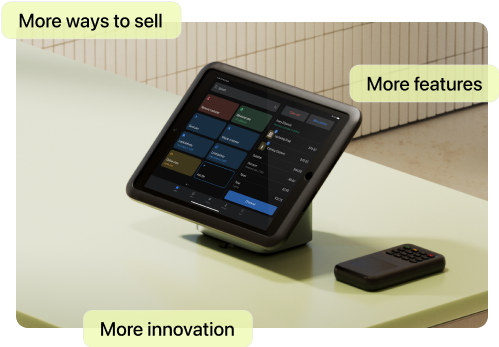Few modern predicaments are as daunting as waste removal, which explains in part why the industry continues to thrive. Despite post-pandemic volatility, the waste removal industry is still massive, valued at $86 billion.
When it comes to cleaning out an estate, a defunct office, a construction site, or someone’s home, people often seek help to remove bulkier items or a large volume of garbage, and junk removal pros are there to answer the call.
Learn how to start a junk removal business and spread the word about your services.
Types of junk removal
There are many types of junk removal jobs, each requiring different skills, experience, and junk removal equipment. Before you get started hauling junk, research the various junk removal services you could potentially offer:
Home services
This runs the gamut from helping with spring cleaning to facilitating estate cleanouts to neutralizing hoarding situations. Typically, all you need to remove most items in a home cleanout are a dolly and a pickup truck. Junk removal business owners sort through the mess, donating and recycling what they can and dumping the rest. Keep in mind that most waste management facilities charge high disposal fees for large hauls, encouraging junk removal businesses to dump responsibly.
Office cleanouts
When commercial ventures close down, they often leave behind a mess. We’re talking about large furniture, lots of documents (some sensitive), and electronics. A junk removal specialist will haul away the large items, shred the documents, and dispose of the electronics properly.
Oversized pick-up
Most people don’t have the physical strength, equipment, or means of transportation necessary to remove large furniture items or appliances themselves. A junk removal company will haul these things away to the dump, or to resellers or refurbishers when possible.
Electronic waste
Since electronics often contain hazardous chemicals, there are laws around how to properly dispose of them. A good removal business will take the unwanted items to an electronics-specific recycling center according to local regulations.
Green waste
Big landscaping projects often produce a high volume of green waste—branches, piles of leaves, or even entire trees and bushes. A responsible waste management company with green waste experience will break these down into usable mulch.
How to start your own junk removal business in 8 steps
- Make a business and financing plan
- Purchase equipment
- Register your business
- Secure licenses and permits
- Find insurance
- Decide on a pricing model
- Build a website
- Market your business
When considering how to start a junk removal business, you’ll need to think through your business approach, your equipment, and your marketing plan. Use these eight key steps to get started:
1. Make a business and financing plan
Before getting started, make a junk removal business plan using Shopify’s free business template or by addressing each of these bullet points:
-
Executive summary. The overview of your business plan. Although it comes first, it’s often best to write your executive summary last, after you’ve had the opportunity to work through the other items in your plan.
-
Company overview. Clarify in simple language which junk removal services your business will offer and what will set it apart in the market.
-
Market analysis. Detail your target market, including your competitive advantage and whether competitors are currently meeting your target customers’ needs.
-
Marketing plan. Write out your plan to promote your services. Because junk removal is a crowded space, you’ll want to consider ways to differentiate your business from the national chains and reach your target audience.
-
Financial plan. To turn a junk removal business profitable, you’ll need to make sure you have what you need to actually transport junk up front. Because of the relatively high startup costs, you might want to consider financing options, like taking out a small business loan.
2. Purchase equipment
Junk removal requires quite a large investment in safety equipment, tools, and transportation. Here’s some of what you need to get started:
-
Pickup truck, box truck, or dump truck
-
Push broom
-
32-gallon garbage can
-
Heavy-duty plastic trash bags
-
Yard waste bags
-
Rake
-
Flat shovel
-
Gloves
-
Sledge hammer
-
Circular handheld saw
-
Drill
-
Safety glasses
-
Toolkit
-
Dolly
3. Register your business
Most states and municipalities have business registration requirements. You’ll need a unique business name to register, and you should confirm the domain name and any social handles you might want to promote your junk removal business are also available. If you need inspiration, check out Shopify’s business name generator.
A key part of starting and registering a successful junk removal business is determining its legal structure. There are multiple business structures to choose from, depending on your tolerance for risk. Many small businesses are limited liability companies (LLCs) or S corps. Unlike a sole proprietorship, LLCs and S corps keep business and personal assets separate. Both allow the business to hire employees.
4. Secure licenses and permits
Your local municipality will require you to acquire a junk removal business license to operate. The actual name might be a waste removal and transportation license, waste hauler permit, or similar terminology. Typically, a municipality’s sanitation department or local waste management department handles these applications and permits.
5. Find insurance
Junk removal is a very physical operation, which means mishaps sometimes occur. Securing business insurance can protect you from legal troubles involving property damage. While some companies market specific junk removal business insurance packages, you can also replicate a package on your own. On a high level, you’ll want to consider general liability insurance, commercial auto insurance, and workers’ compensation insurance.
Some states and counties have specific requirements. For example, Florida’s Miami-Dade County requires at least $1 million of vehicle liability insurance for all vehicles you plan to use to collect and dispose of trash. Always check your local guidelines.
6. Decide on a pricing model
To run a profitable business, you’ll have to balance the equation of your business expenses against your billable hours and set prices.
A common pricing model for service-oriented businesses is value-based pricing, where you set prices according to how much customers think the service is worth. Because junk removal is often difficult for customers to do themselves, it can be worth a great deal to them. Familiarize yourself with a variety of pricing strategies before deciding on the one that suits your business best.
7. Build a website
One of the first steps to marketing your business is building a website that prominently displays your business name, services, prices, areas served, contact information, and testimonials from satisfied customers. A website builder like Shopify can help you professionally display all of your company’s important information, as well as integrate with appointment-booking apps so clients can easily schedule time with you.
8. Market your business
The junk removal industry is already crowded with national names, so once your business website is up and running, you’ll next need to create a marketing plan. A well-designed marketing plan increases your business’s visibility and can even convince potential customers to choose your operation over a competitor’s.
First, figure out the best way to reach your customer base. Many service-based businesses start by finding potential customers through sites like Yelp, Angi, Thumbtack, or TaskRabbit, where users can rate and review services. List your business in their directories and then market your business using their pre-built templates. You’ll want to upload your logo, photos, and the descriptions of your services.
High ratings and good reviews are valuable marketing tools. Ensure you always offer top-notch customer service and ask satisfied customers to consider leaving a review. After your company is more established and has begun generating revenue, consider higher-spend tactics like social media marketing, paid digital advertising, and a search engine optimization (SEO) strategy.
How to start a junk removal business FAQ
How much does it cost to start a junk removal business?
Since it involves transporting large items, buying and insuring a truck are significant upfront costs you’ll need to incur when starting a junk removal business. In addition, you’ll need to pay for transportation, supplies, permits, licenses, other insurance and fees, and for labor (either for yourself or employees you hire).
How do you get a license for junk removal?
Permitting and licensing requirements for starting a junk removal business vary based on location. Check your Secretary of State’s website to find out what’s required in your area.
Do you need insurance for junk removal?
Most states require workers’ compensation and auto insurance for any business employing people or using vehicles. Many business owners also choose to get general liability insurance, as well as insurance to cover any other specific situations that might arise in their line of work.
What do I need to start a junk removal business?
Starting a junk removal business requires:
-
Physical strength. You must be able to lift heavy objects, break down large objects, and be on your feet.
-
Transportation. You must be able to haul waste away in the appropriate vehicle.
-
Business savvy. You must be able to understand customers’ needs and how to best deliver them.
-
Administrative skills. You must be able to handle bills, finances, paperwork, and personnel.
-
Supplies. You’ll need to procure basic supplies like a trash can, shovel, saw, and drill.







